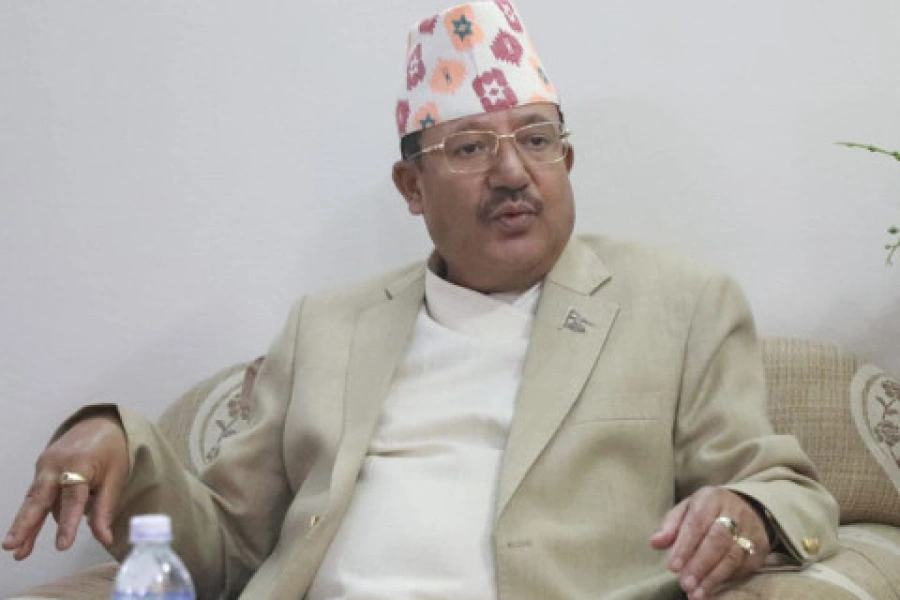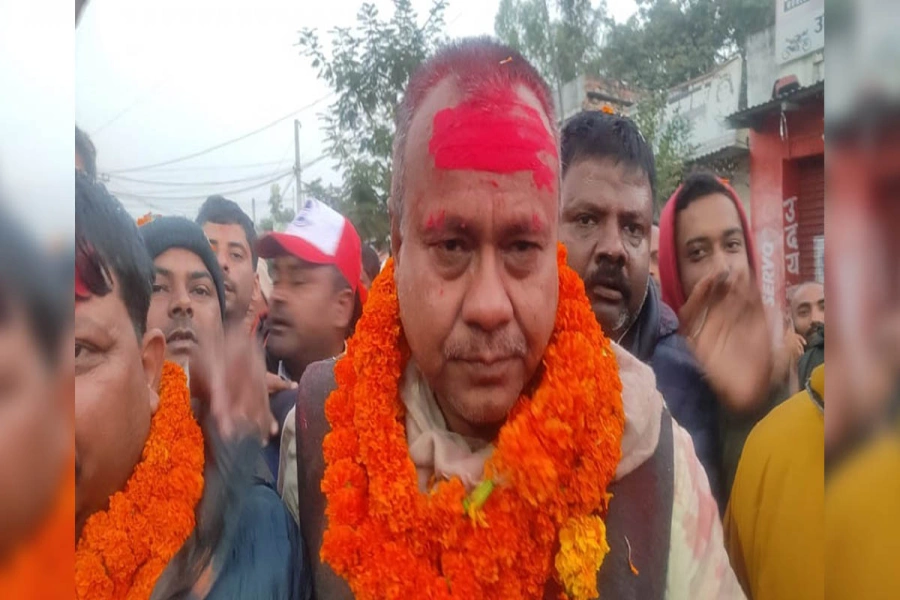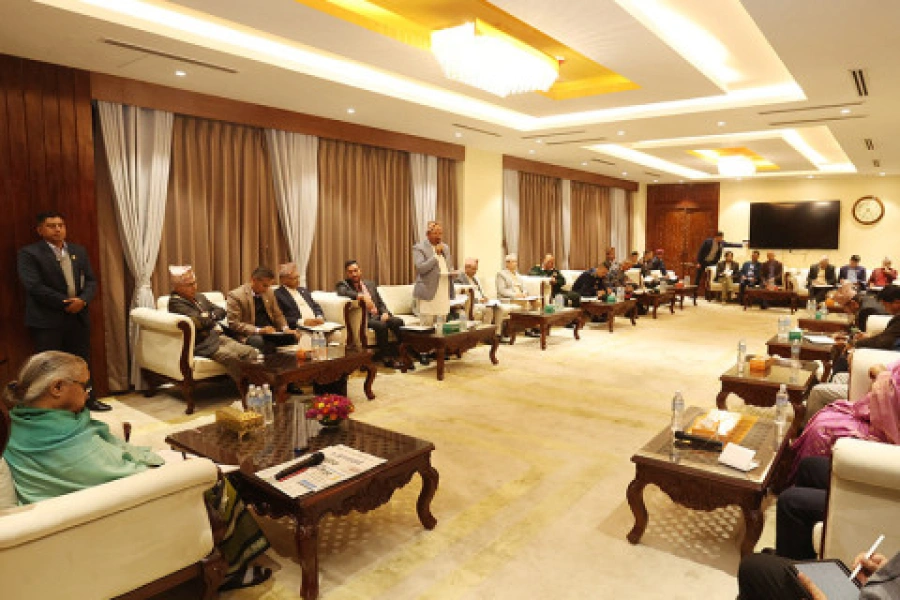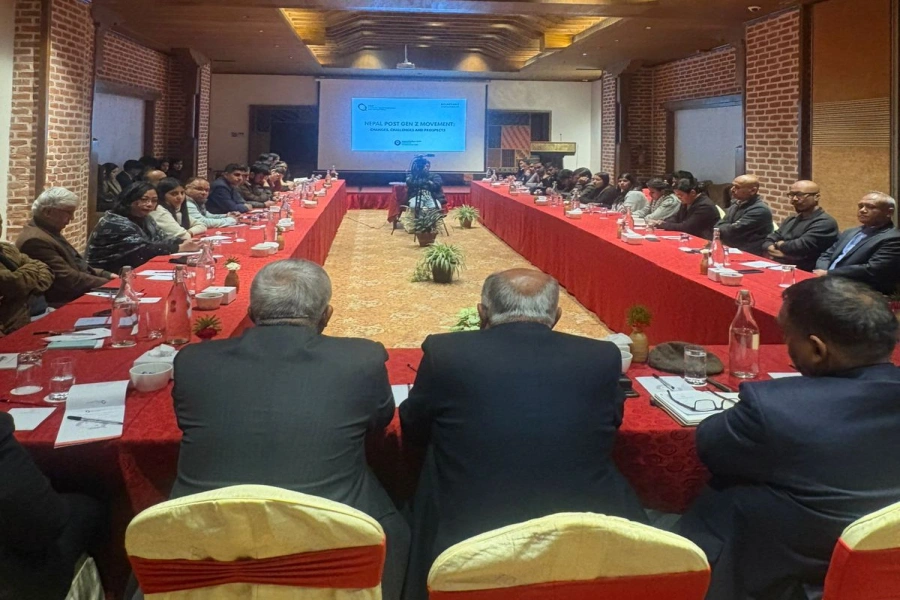The government has forwarded many ordinances to the president, including the one authorizing the president to exercise his right to remove difficulties. How do you view this mode of government functioning?
The question of whether the government is right to forward these ordinances and whether the president is compelled to clear them is a matter of political debate. But rather than questioning whether the ordinances were necessary, let us see it this way: The interim constitution had not envisioned a scenario of the cabinet of ministers dissolving the CA and declaring new polls. Election of CA for the second time is beyond the purview of interim constitution. I believe all the current controversies are the outcome of the May 27 decision to dissolve the CA.
If the government was aware that the CA had to go, why didn’t it prepare for new CA polls? After all, the Supreme Court had said six months in advance that the CA could not be extended beyond May 27. The government should have had plans to clear the constitutional hurdles in case there was no constitution by May 27. But the government has decided to take the easy route of ordinances. We have to see the ordinances in the context of the dissolution of CA. If we limit our debate to whether the ordinances being forwarded to the president are constitutional, we will get nowhere.
Politically, what could be the government’s intent behind forwarding various controversial ordinances for the president’s approval?
At a political level, everything that is happening right now is unconstitutional. Like I said, the interim constitution does not envision new CA. Thus the question of constitutionality of the works being carried out by the current government was bound to arise. It is true that the interim constitution does not give the president much discretionary power over the ordinances forwarded by the cabinet. But the situation now is that questions have been raised over the very functioning of the cabinet. In case of the ordinance asking the president to use his power to remove difficulties, the president can do so only when the executive wants to carry out its duties as prescribed in the constitution and there is no legislature. But the question is: If the president is now forced into exercising his prerogative to remove difficulties, what will stop him from using his discretionary powers again? That would set a dangerous precedent.
How do you interpret the role of the president post May 27?
I don’t see much room for debate over the president’s actions. In totality, his actions post 2008 CA polls can be interpreted as positive. Post May 27, the political parties have been trying to use the president to serve their own interests. But even in this situation, the president has been able to play a balanced role. I say this because the president has constantly emphasized the need for political consensus. He has said that he is ready to clear constitutional hurdles if there is consensus. This is the right way to go about it.
In your view how can the current political and constitutional deadlock be broken?
I don’t see any way out if we are to go by the interim constitution. The only way out is through broad political consensus on either reinstatement of the CA or election of a new one. There is no justification for reinstatement that is not time bound. What can be done is that the political parties can come to consensus and ask the president to exercise his prerogative to remove difficulties and revive the CA for a limited period. This can be done to clear constitutional hurdles for future polls.
The second option is for the political parties to arrive at an agreement on a draft constitution by stepping on the work of the dissolved CA. Then the CA can be revived for a fixed period. But if the path of reinstatement is taken without first addressing the issues that led to the CA’s demise on May 27, it will create further problems.
Is political consensus a must for either of the two options?
Yes. Remember, in the lead up to May 27, two dangerous tendencies came to the fore. The first was widespread disagreements between the ruling and opposition parties. The second was deep divisions on the question of federalism among Nepali people. Rather than take the country back to that scenario, political parties should first come to common minimum understanding on new constitution. Although there were other differences, the major source of divide on May 27 was the issue of federalism. If the parties could have seen eye to eye on this issue, we would have had a constitution.

PM Bhattarai had said he would step down only when there is consensus on future government. But the opposition parties are asking for his resignation to create an atmosphere of consensus. How do you view this debate?
It is an old ploy in Nepali politics to seize on the weaknesses of the prime minister and exaggerate them to bring the government down. The perception among the people is that the disagreements between the major parties are not over major constitutional issues, but the outcome of the same-old power game. If there is agreement among major parties, they can settle on any one of the options on the table. But if such an agreement cannot materialize, the person who can create an atmosphere of consensus should lead the new government. It is not a question of whose turn it is to lead the government. The criteria for selection of new leadership should be the competence of the person in question.
Are you saying that it is not necessary that the new government be led by Nepali Congress as per the five-point agreement?
Yes. If there are no agreements on major issues, it really does not matter who leads the government. Rather the person who is seen as the most competent to settle differences in current political negotiations should assume government leadership. For such a person would have demonstrated his ability to take the country ahead even in these difficult times.
Amidst the wrangling over government leadership, undemocratic elements have crept in through the back door. For instance, you cannot call the current government democratic. A government that is answerable to no one cannot be democratic. Such a government is rather authoritarian in that it exercises authority without accountability towards anyone.
What do you think should be the role of the ruling coalition?
The main issue again is lack of accountability. By embarking on the constitutional project, we were in the process of consolidating the gains made after the 2006 change. Now that the whole process has been derailed, shouldn’t someone take responsibility for it? The prime minister used to say that he would not stay in power even for a day if he failed to honor his promises. But he continues to rule even though none of his promises have materialized. Thus, first, the prime minister should accept his responsibility. He should accept the fact that he has been a total failure both on the constitutional and political front. If he accepts this, then the ongoing dialogue can take a positive turn.
You mean the prime minister should step down?
No, I didn’t say that. The issue of the PM’s resignation has been unnecessarily politicized. The prime minister is responsible for the current state of affairs and he has to take ownership of this fact. But I don’t believe the only way out is his resignation. There is no guarantee that the new prime minister will be able to deliver where all his predecessors have failed. I believe the only mandate that is still relevant is the strength of the political parties in the dissolved CA. The current ruling coalition was in the majority when there was the CA, but after the break-up of UCPN (Maoist) and Bijaya Gachhadar led-MJF, question can be raised on the government’s claim to majority. In this situation, there has to be a new agreement.
Like you said, the dissolution of the CA was mainly owing to differences over the federal agenda. What in your view should be the minimum understanding on this issue?
The issue of federalism came into controversy as we neared the May 27 deadline. I believe our geopolitical sensitivities played a big part. We could not take our sensitive geopolitical situation into account while discussing the issue of federalism. Under the current circumstances, there are only two options. First is to go for a referendum on federalism. Now is the right time to ask if federalism is the right system for the country. This was not the situation yesterday when we raised the issue of state restructuring, of which federalism was an inherent part. During the last CA polls, every political party except Samukta Janamorcha in one way or the other addressed the issue of federalism in their election manifesto. Since around 98 percent of the votes went to the parties that advocated federalism, we can say that in 2008 people overwhelmingly voted in favor of federalism. It was a kind of informal referendum on the issue. But since that CA failed to come up with a federal constitution, the question over federalism is relevant once again.
The current coalition has been trying to present itself as the sole proponent of federalism. If that is the case, why can’t it face the challenge of a referendum on the issue? The ruling coalition has to practice what it preaches. Only Nepali Congress and CPN-UML are not blocking the federal agenda. With the support of the dissidents from NC and UML, there was a clear majority of CA members in favor of federalism. But then why couldn’t the assembly pass the constitution? If the political parties cannot agree on certain constitutional questions, it is the practice of democracies around the world to go for a referendum. If you say referendum is a costly exercise, we have already taken a costly road by electing a CA. So why the reluctance to bear a little more cost?
But the current debate seems to be not on federalism as such but its aspects like single or multiple identity states and delineation of borders.
That might be the case. But what you have to understand is that behind the façade of debate on names and number of federal states, is the bitter reality that some parties have always been against the federal agenda. For instance if you look at NC and UML, although they have in principle adopted the federal agenda, their statements and activities put them in the anti-federalist camp. The number of provinces should be a non-issue as it will be decided on the minimum criteria for the creation of states.
But by saying that 10- or 14-state model is unacceptable, it might be argued that NC and UML are presenting themselves as anti-federalists. If there can be a healthy agreement, federalism is still important for Nepal. But the kind of discussions we have had on federalism has not helped. What we needed is broader democratic federalism, not the kind of the communist utopia the Maoists have been talking about. I also find the debate over identity irrelevant. Can a province be multi-identity just by naming it after two or three ethnic groups? More important are issues of fundamental rights of the people and establishment of a sense of ownership in provinces.
You raised the issue of geopolitics in relation to the federal project. Could you elaborate?
What is remarkable is that up until May 27 neither the south (India) nor the north (China) expressed any reservation with the federal agenda in Nepal. But after the CA process ended on May 27, the Chinese delegation which visited Nepal clearly said that the kind of ethnicity-based federalism the country was mulling was neither in the interest of Nepal nor China. This means that the kind of debate on federalism we were having was disconcerting to our northern neighbor. Likewise, the Indian envoy to Nepal has said ethnicity-based provinces are not viable in Nepal. Even Prachanda said some days ago that the issue of federalism should be settled considering our geopolitical sensitivities. In my view, the CA was dissolved with the goal of halting the federal project by behind the scene actors.
Are you implying that the CA was dissolved under the pressure of outside forces?
The issues of priority rights or the right to self-determination which come under Lenin’s model of federalism were abandoned by Mao during the Cultural Revolution as far back as the 1960s. Thus even China has abandoned the model. It is not wrong to be influenced by Maoist thoughts as communists, but China seems to have felt that the raising of these sensitive issues would have ramification over the issue of Tibet. This is the kind of external political impact I am talking about. I believe that in the lead up to May 27, the international community wasn’t convinced that Nepal could go federal. Different forces were using the federal agenda to suit their own interests. Both India and China must have calculated the growing impact of international lobbies in Nepal as inimical to their interest, hence their heightened sensitivities.
Nepali Congress accuses govt of pushing country toward lawlessn...




































